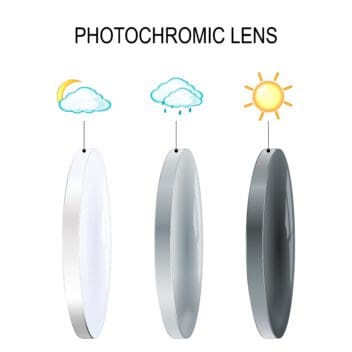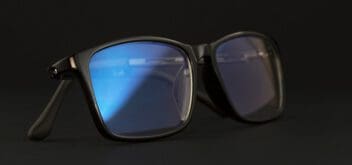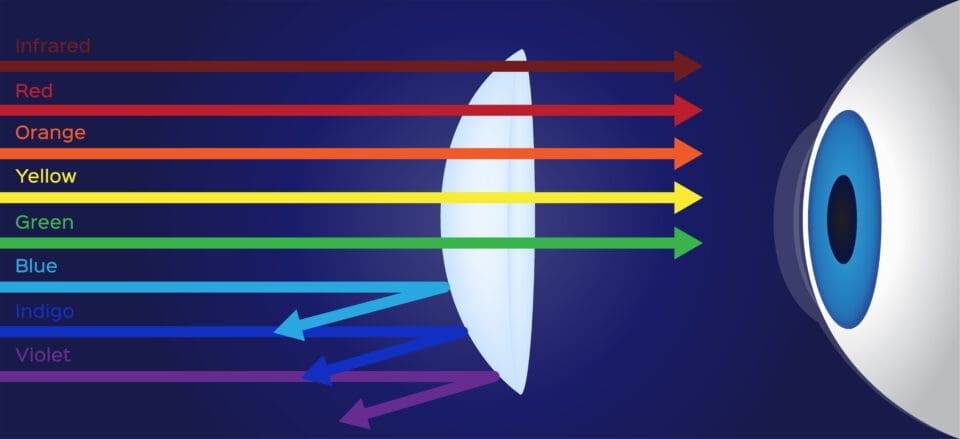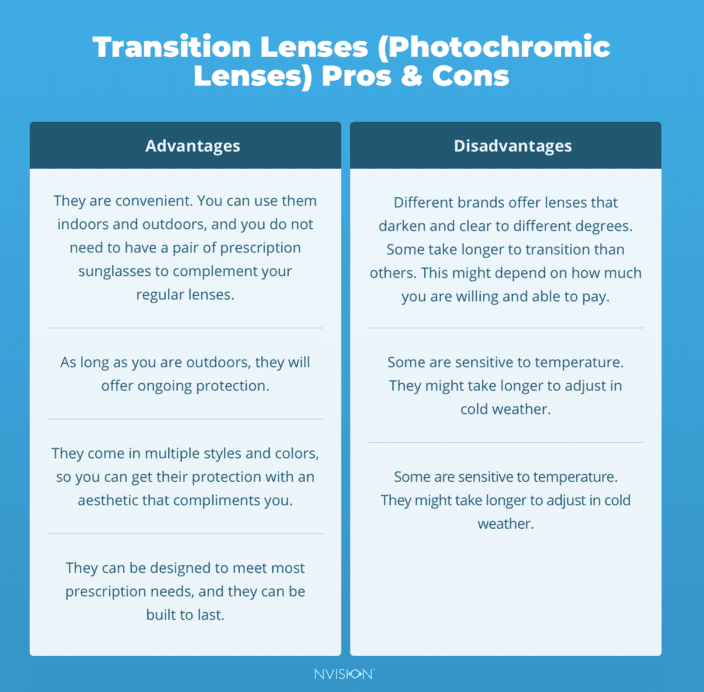Last Updated
Further Reading
- 8 Eyeglass Trends
- Trifocals
- What People Did Before Glasses
- How to Find Your Pupillary Distance
- Cheap Sunglasses Dangers
- Anti-Reflective Coating
- How Much Should You Spend
- Polarized vs. Regular Sunglasses
- Prescription Sunglasses
- Medicaid for Glasses
- 5 Ways (or Places) to Donate
- Trivex Lenses
- How to Choose Glasses for Your Face Shape
- Prism Glasses for Double Vision
- What is Neurolens?
- Cleaning Eyeglasses
- Organizations That Help Provide Eyeglasses
- SPH & Prescription Meanings
- Aspheric Lenses
- Safety Glasses
- Crizal Lenses
- HD Glasses Improve Your Vision
- Post-Cataract Sunglasses
- Glasses For Computer Vision Syndrome
- What Strength Glasses Are Right for You?
- How Often You Should Change Glasses
- Can Glasses Really Fix Colorblindness?
- Signs You May Need Glasses
- Macular Degeneration Glasses
- Glasses After Cataract Surgery
- Can Glasses Make Vision Worse?
- Adjusting to Your First Pair of Glasses
- High Index Lenses
- Blue Light Glasses
- What to Know About Your Eye Prescription
- Anti-Reflective Lens Options
- Prescription Sports Glasses for Children
- Glasses Online vs. In-Store
- Can Glasses Help With Night Driving?
- Progressive Glasses Lenses
- Best Glasses Lenses in 2020
- Glasses After LASIK
A Guide to Photochromic Lenses and Transition Lenses (2022)
Home / Everything About Glasses /
Last Updated
Photochromic lenses, sometimes referred to as transition lenses, are eyeglass lenses that will turn dark (resembling sunglasses) in sunlight and become clear again when indoors. This is the result of chemical responses to the presence (and absence) of ultraviolet light.
Table of Contents
The most popular manufacturer of photochromic lenses in the U.S. is Transitions Optical, which is why photochromic lenses are commonly referred to as transition lenses. But there are many other manufacturers.
Photochromic lenses are very useful for driving, sports, and outdoor activities. They can even cut down on the harmful glare of electronic devices.
What Are Photochromic Lenses?

Photochromic lenses are eyeglasses lenses that are designed to be clear (or almost entirely clear) indoors, and to automatically darken in outdoor, bright conditions. Effectively, they are normal eyeglasses that transition to sunglasses, to allow for improved visibility in the absence or presence of light. They are also known as light-adaptive lenses and variable tint lenses.
Photochromic lenses are also known as transition lenses because the most popular brand of this kind of lens in the United States is sold by Transitions Optical. As a result, the terms photochromic lenses and transition lenses are sometimes used interchangeably, even though there are other brands of photochromic lenses on the market.
How Do Photochromic Lenses Work?
Photochromic lenses work the way they do because the molecules that are responsible for the darkening of the lenses are activated by the ultraviolet radiation in sunlight. UV rays can penetrate clouds, which is why photochromic lenses are capable of darkening on cloudy days. Direct sunlight is not required for them to work.
They shield eyes from 100 percent of the harmful ultraviolet rays from the sun.
This mechanic is also used inside most windshield glasses in cars. Windshields are designed this way to help drivers see in sunny conditions. This also means that since the UV rays that enter a car are already filtered by the windshield, photochromic eyeglasses will not themselves darken. Very recent advancements in photochromic technology allow some brands of photochromic lenses to activate in both ultraviolet and visible light, so these eyeglasses will turn darker even in a car that has a UV-filtering windshield.
Photochromic lenses work via a chemical reaction in the lenses. They are made with trace amounts of silver chloride. When silver chloride is exposed to ultraviolet light, the silver molecules gain an electron from the chloride to become silver metal. This gives the lens the ability to absorb visible light, turning darker in the process.
The lenses are made out of similar chemical compounds as those used in the development of photographic film. While film exposure is made to be permanent, photochromic lenses are also made with copper chloride, which strips the silver of its chloride electron. This is what helps the lenses return to their original, non-absorbing state in the absence of ultraviolet light.
This method is used in all forms of eyewear that use photochromic lenses, such as high-index lenses, progressive lenses, and bifocals.
Many people choose to use anti-reflective coating on their photochromic lenses to enhance their performance. Anti-reflective coating allows a greater amount of light to pass through the lenses to provide sharper vision in low-light conditions, like driving at night. This also removes reflections of sunlight and other distractions from the reverse side of the lenses when conditions are bright.
For obvious reasons, photochromic lenses cost more than regular eyeglass lenses. But customers get the freedom to not have to carry a pair of prescription sunglasses whenever it is bright out.
Different Kinds of Photochromic Lenses

There are many brands of photochromic lenses available in America. The most popular one, and the one that is most often cited when talking about photochromic lenses, is Transitions Optical.
In some ways, Transitions Optical has become synonymous with photochromic lenses, In July 2019, Transitions Optical introduced the Transitions Gen 8 lenses, which are the fastest light-adaptive lenses the company manufacturers. It takes 30 percent less time for the lenses to activate in the appropriate lighting conditions.
Also developed by Transitions Optical are Transitions XTRActive, which are lenses intended for people who are light-sensitive indoors and want a darker lens when they are outdoors or have to drive. These lenses have a slight tint for indoor use, which keeps the eyes comfortable when they are exposed to digital device screens, fluorescent lights, and other forms of glare and harsh lighting.
Transitions Optical has also developed Transitions Vantage, lenses with a minimal indoor tint and a stronger polarization effect for outdoor darkening. This offers users a better degree of glare control in conditions that are bright and reflective. The polarization constantly adjusts when the glasses are outdoors, as a way of matching the level of the reflective glare. According to the manufacturer, this gives patients a “high-definition visual experience.”
Sensity and LifeRX
Another form of photochromic lens is produced by Hoya Vision Care. Their product is called Sensity. In addition to changing in different light conditions, these lenses change their clarity consistently in different climates and temperatures. Hoya Vision produces Sensity lenses in a variety of colors, designs, materials, and coatings for anti-reflection.
Vision-Ease Lens creates LifeRX, photochromic lenses made from polycarbonate. They are designed for speed, taking less than 60 seconds to darken outdoors. They then fade back faster indoors than any other photochromic lenses on the market.
PhotoFusion lenses come out of Germany, where they are made by Carl Zeiss Vision. These lenses come in a neutral gray tint, which gives users accurate color vision in all degrees of light. They are also designed to darken and lighten quickly.
There are many other kinds of photochromic lenses, all with their own tints and promises of quick transitions in appropriate lighting conditions. Check with your optometrist to see what brands are best for your vision and your budget.
Photochromic Sunglasses
Photochromic lenses also come in sunglass form. These are designed mainly for outdoor wear.
Expectedly, they are not really meant for indoor use, and they will not clear up to the same degree as regular photochromic lenses. They are designed to provide extra eye protection and visibility to people who have to be out in the sun a lot for work, recreational, or sporting activities like cycling. They are also good for long-distance driving.
For more driving needs, one style of photochromic lens is Transitions Drivewear, also produced by Transitions Optical. These are polarized photocromic adaptive lenses that are made specifically for use behind the wheel. They are designed to darken and clear with changing light conditions when inside a vehicle. They enhance contrast and improve clarity for driving.

Photochromic Lenses and Blue Light
Light rays on the blue end of the light spectrum have shorter wavelengths and more energy. In and of itself, blue light is natural and can even be healthy when consumed properly.
However, our computer screens, smartphone screens, tablet screens, and even modern television screens use blue light to project their content, and we tend to watch that content in low-light conditions (usually in bed, shortly before sleep). Doing so disrupts the body’s biological clock, giving us less sleep and causing numerous other problems related to not letting our eyes and brain rest at the end of the day.
Specifically, blue light can lead to digital eye strain (what the American Optometric Association calls computer vision syndrome), which people often experience as the following:
- Headaches
- Eye strain
- Blurred vision
- Dry eyes
- Pain in the neck, shoulders, and back
As a counter to this problem, some manufacturers have begun producing photochromic lenses that are designed to reduce the stress and glare from blue light-emitting devices, especially in low-light conditions. For people who have to work nights or in dark environments but need to look at their screen, these photochromic lenses allow them to use their eyes while protecting them from the worst symptoms.
Useful as transition lenses are in this scenario, the activity still places a lot of stress on the eyes, and working in these conditions should be minimized as much as possible. Consult your doctor about how you can use these photochromic lenses for blue light and other methods (like resting your eyes and doing gentle eye massages) to protect your vision while carrying out your job responsibilities.

Photochromic Lenses: Pros and Cons
Photochromic lenses offer many conveniences for daily life, but are they a cure-all for vision needs? The American Academy of Ophthalmology compiled a list of pros and cons for whether transition lenses are right for you.
Advantages
- They are undeniably convenient. You can use photochromic lenses indoors and outdoors, and you do not need to have a pair of prescription sunglasses to complement your regular lenses.
- As long as you are outdoors, photochromic lenses will offer ongoing protection.
- Photochromic lenses come in multiple styles and colors, so you can get their protection with an aesthetic that complements your face and hairstyle.
- Photochromic lenses can be designed to meet most prescription needs, and they can be built to last.
Disadvantages
- Different brands offer photochromic lenses that darken and clear to different degrees. Some take longer to transition than others. This might depend on how much you are willing and able to pay.
- Some photochromic lenses are sensitive to temperature. They might take longer to adjust in cold weather.
- Not all photochromic lenses darken very well inside cars, for reasons mentioned earlier.
Photochromic lenses are very popular, effective, safe, and convenient, but everybody’s eye health and eyes are different. Talk to your doctor about whether photochromic lenses are a good fit for you, which brands might suit your needs, and if there are any lifestyle changes you can adopt to get the most from your photochromic lenses.
Cost of Photochromic Lenses
The cost of photochromic lenses depends on why someone is wearing them. For example:
- Safety glasses with photochromic lenses cost between $40 and $220 a pair
- Sunglasses with photochromic lenses cost between $75 and $400 a pair
- Getting photochromic technology added to a pair of prescription eyeglasses usually adds between $100 and $400 to the total cost of those glasses. In many cases, this can bring the total cost of a pair of glasses to nearly $1,000.
Photochromic lenses sometimes are covered by insurance. Check your policy to see if you have partial or full coverage for this type of lens.
Often, coverage is not specific to the specific lens but to the frame and to overall lens. It can be tricky, because some insurance covers basic lenses but will not always cover high-end lenses. It really is a case-by-case basis.
Can Prescription Lenses Be Made with Photochromic Lenses?
Prescription lenses can be made with photochromic technology upon request. Many optical suppliers will make prescription eyeglasses with photochromic lenses to accommodate patients who spend a lot of time outdoors. Ask your optometrist about photochromic lenses to see if they offer this service.
Acuvue also offers contact lenses with photochromic lens technology. These contacts are the first of this type to be approved by the FDA and sold to the general public. They work just like photochromic glasses, but they are more discreet and more comfortable for some people to wear.
Also, it’s possible you may have to shop around to find a optical dealer who will order these for you. If you’re lucky, you can do your shopping over the phone. Otherwise, you may need to pay a personal visit to different optical shops to query them about your specific requests.
References
- Photochromic vs. Polarized Sunglasses. LIVESTRONG.
- What Is Ultraviolet Light? (September 2017). Live Science.
- How Do Transition Lenses Work? (February 2016). Mental Floss.
- Are Anti-Reflective Coatings Worth the Cost? (July 2019). Verywell Health.
- Transitions Optical Targets Fashion-Oriented Millennials. (April 2018). Media Post.
- 10 Best Photochromic Sunglasses for 2019. (August 2019). MSN.
- Blue Light Has a Dark Side. (August 2018). Harvard Medical School.
- Computer Vision Syndrome. American Optometric Association.
- The Pros and Cons of Transition Sunglass Lenses. (June 2017). American Academy of Ophthalmology.
- FDA approves Acuvue Oasys contacts with photochromic additive. (April 2018). Healio.com.
- Cost of Photochromic Lenses. (2021). CostHelper.com.
The information provided on this page should not be used in place of information provided by a doctor or specialist. To learn more, read our Privacy Policy and Editorial Policy pages.
Further Reading
- 8 Eyeglass Trends
- Trifocals
- What People Did Before Glasses
- How to Find Your Pupillary Distance
- Cheap Sunglasses Dangers
- Anti-Reflective Coating
- How Much Should You Spend
- Polarized vs. Regular Sunglasses
- Prescription Sunglasses
- Medicaid for Glasses
- 5 Ways (or Places) to Donate
- Trivex Lenses
- How to Choose Glasses for Your Face Shape
- Prism Glasses for Double Vision
- What is Neurolens?
- Cleaning Eyeglasses
- Organizations That Help Provide Eyeglasses
- SPH & Prescription Meanings
- Aspheric Lenses
- Safety Glasses
- Crizal Lenses
- HD Glasses Improve Your Vision
- Post-Cataract Sunglasses
- Glasses For Computer Vision Syndrome
- What Strength Glasses Are Right for You?
- How Often You Should Change Glasses
- Can Glasses Really Fix Colorblindness?
- Signs You May Need Glasses
- Macular Degeneration Glasses
- Glasses After Cataract Surgery
- Can Glasses Make Vision Worse?
- Adjusting to Your First Pair of Glasses
- High Index Lenses
- Blue Light Glasses
- What to Know About Your Eye Prescription
- Anti-Reflective Lens Options
- Prescription Sports Glasses for Children
- Glasses Online vs. In-Store
- Can Glasses Help With Night Driving?
- Progressive Glasses Lenses
- Best Glasses Lenses in 2020
- Glasses After LASIK